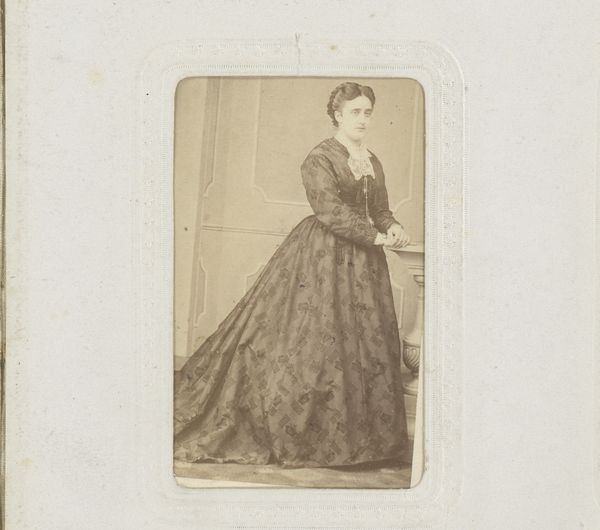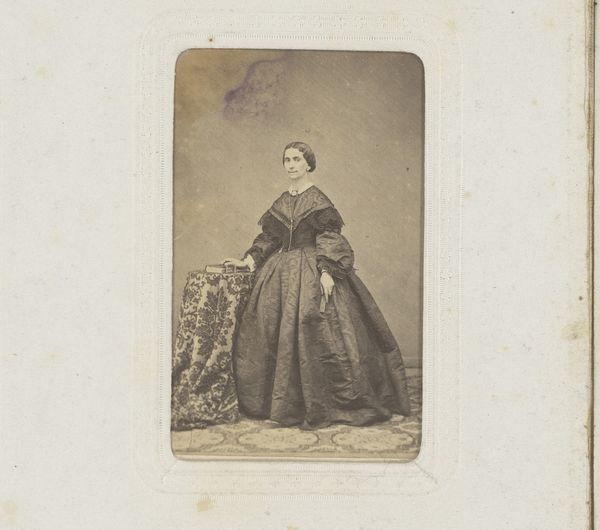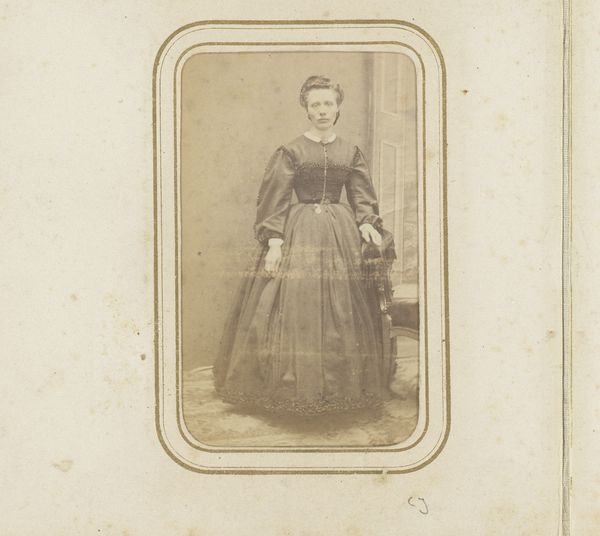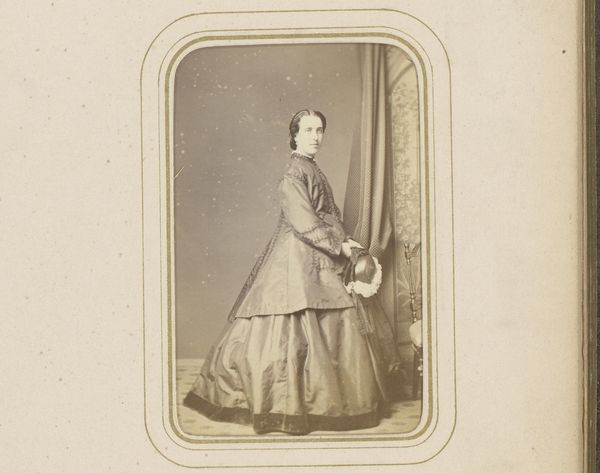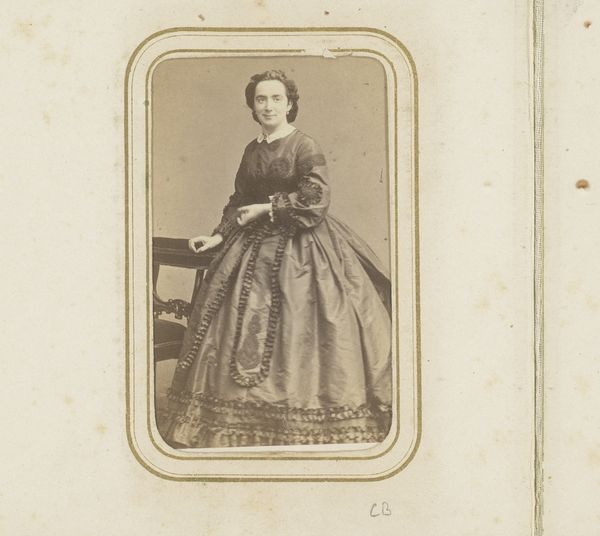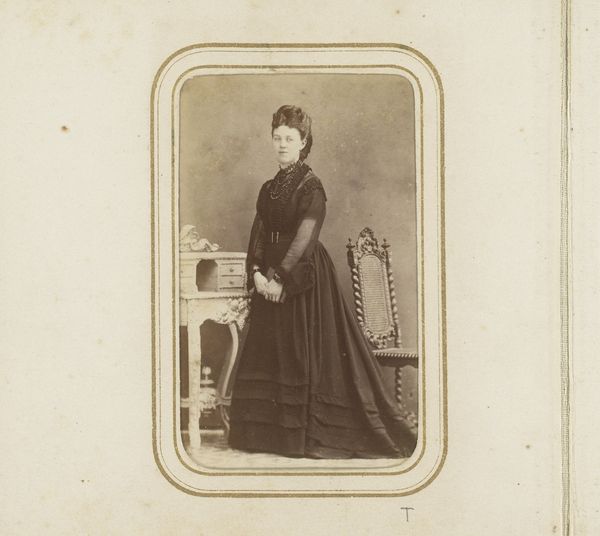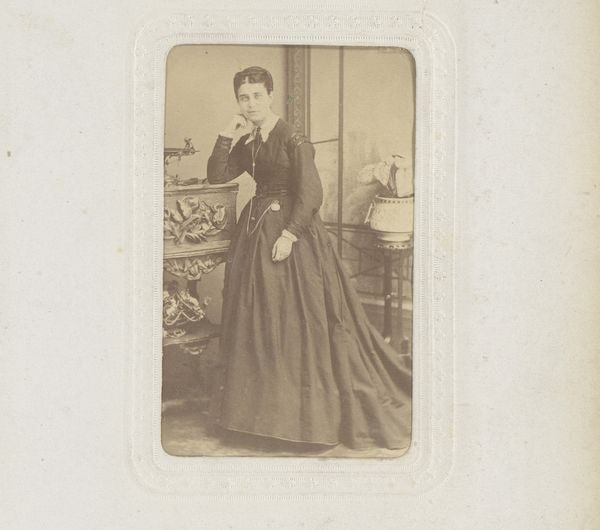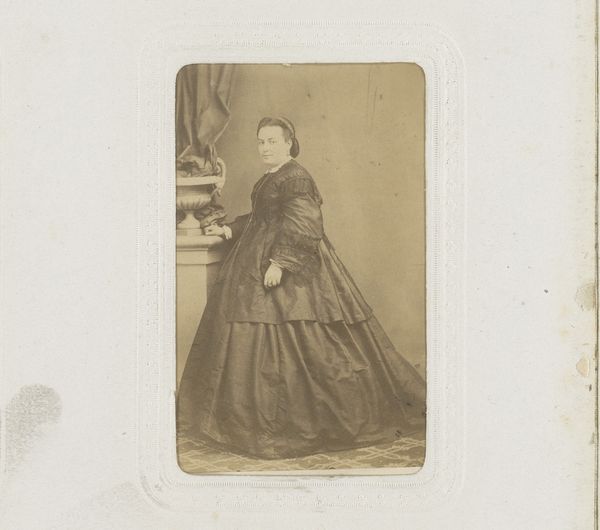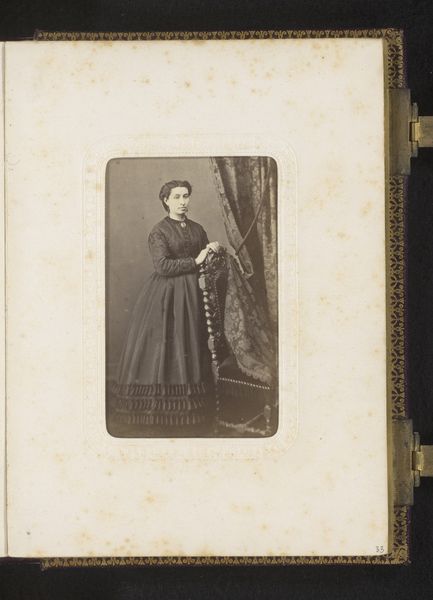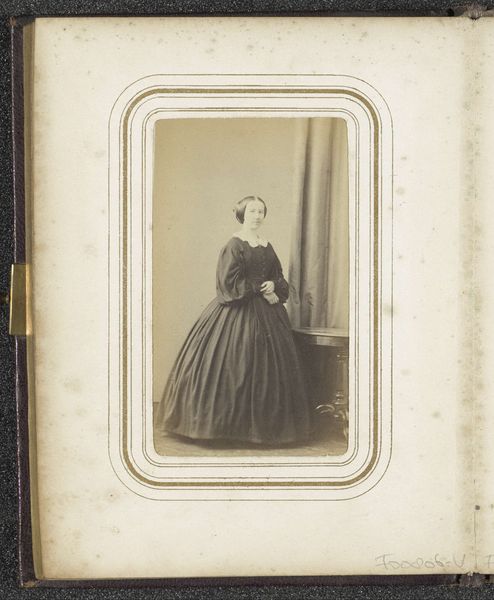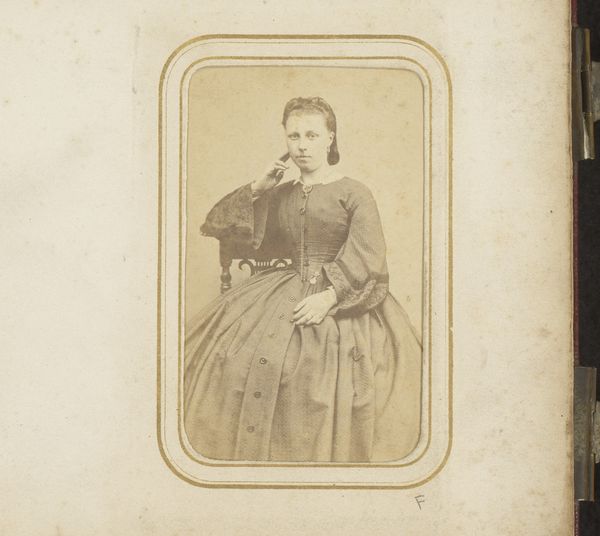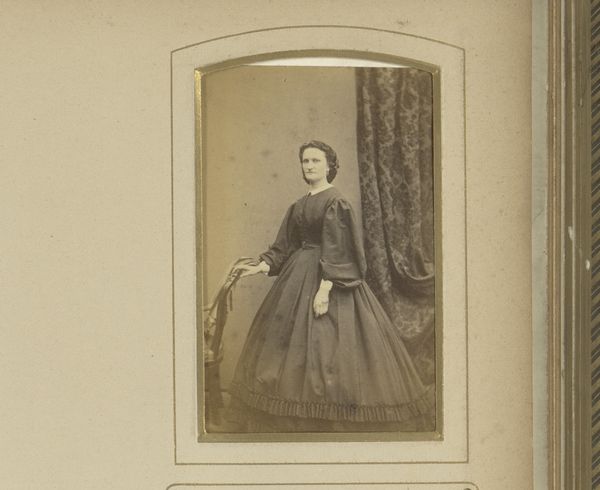
daguerreotype, photography
#
portrait
#
daguerreotype
#
archive photography
#
photography
#
historical photography
#
19th century
Dimensions: height 86 mm, width 52 mm
Copyright: Rijks Museum: Open Domain
Editor: This is "Portret van een vrouw," or "Portrait of a Woman" by Fotografia Zaragozana, created sometime between 1860 and 1890, using the daguerreotype technique. I'm immediately drawn to the subject's solemn expression; it really captures a sense of 19th-century formality. What symbols or visual cues jump out at you in this image? Curator: The stiffness in her posture and expression isn't just formality; it's a carefully constructed image. Notice the single strand of hair and the plain curtain. They convey dignity but they also make us think about the cultural understanding of women at this time, that her image be subdued. This, in its way, symbolizes societal constraints as much as personal identity. Editor: That's a perspective I hadn't considered! The plainness makes sense, in a restrictive kind of way. But why do you think she chose to be photographed at all, and preserved like this? Curator: In many ways it speaks to cultural memory and personal legacy. Even posed and formal, this image becomes an important part of her family history. What remains are symbolic remnants of that life, made meaningful in the eye of the viewer, over generations. Editor: So it's not just a picture; it's a little piece of immortality that speaks to both personal identity and broader societal memory. I didn't think I could learn so much from a daguerreotype. Curator: Precisely! The symbols held within are the core of why it continues to touch us so deeply.
Comments
No comments
Be the first to comment and join the conversation on the ultimate creative platform.

